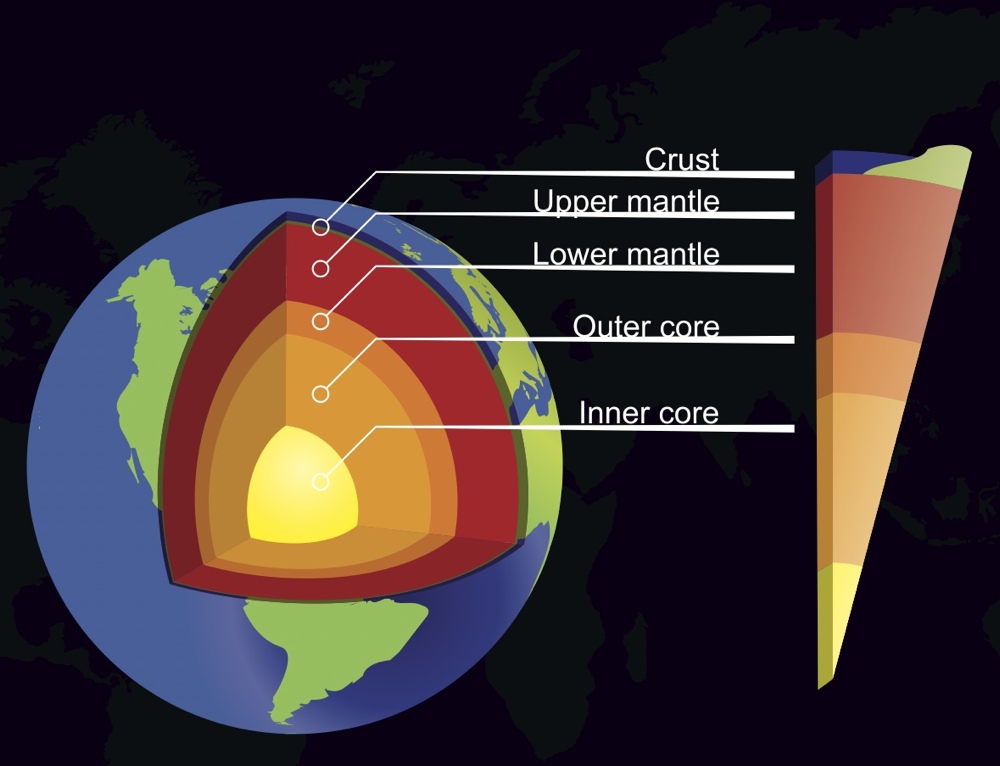Scientists Discover Massive Water Reservoir Hidden Deep Beneath Earth’s Surface
In a remarkable geological breakthrough, scientists have identified what may be one of the largest hidden water reservoirs on Earth—located nearly 400 miles beneath the surface, embedded within a type of rock called ringwoodite. This discovery reshapes our understanding of Earth’s interior and how water cycles through the planet on a global scale.
The water is not in liquid form but is chemically bound within the crystal structure of deep-Earth minerals. It lies in the transition zone between the Earth’s upper and lower mantle, a region that, until recently, was largely unexplored. Scientists estimate the volume of this subterranean reservoir to be approximately three times that of all the oceans on the planet combined.
A Hidden Ocean Beneath Our Feet
This revelation originated from the analysis of a rare diamond formed under extreme pressure deep inside the Earth. When the diamond was brought to the surface through volcanic activity, it preserved unique mineral inclusions that offered a window into the conditions at great depths.
One of these inclusions, ringwoodite, contains hydroxide ions—components of water molecules—which revealed the presence of water stored within the mineral’s crystal lattice. This was the first direct evidence supporting a theory that had been circulating in scientific circles for years: that a significant amount of Earth’s water is locked away within its mantle.
Ringwoodite has the unique ability to hold water within its structure, and it forms under the extreme heat and pressure found between 255 to 410 miles below the Earth’s surface. This layer, known as the transition zone, acts as a kind of sponge, capable of absorbing and storing massive amounts of water.

Why This Matters: The Deep Earth Water Cycle
This discovery carries important implications for our understanding of the deep Earth water cycle. While the surface water cycle—comprising evaporation, precipitation, and river flow—is well documented, scientists are now uncovering the vast and complex subterranean processes that also govern the movement of water through the planet.
Water from the surface can be drawn into the mantle through subduction, where tectonic plates dive beneath one another. Once deep underground, the water becomes trapped in minerals such as ringwoodite. Over geological timescales, this water may eventually be released through volcanic activity or tectonic movement, creating a deep recycling loop that was previously unknown.
This internal water cycle could help explain how Earth has maintained its oceans for billions of years without them evaporating into space, and it may also influence seismic activity, magma formation, and even the stability of tectonic plates.
A New Perspective on Earth’s Hydrosphere
The realization that there is potentially more water trapped inside the Earth than on its surface is paradigm-shifting. It calls into question previous assumptions about the total volume of water on our planet and challenges scientists to reevaluate long-held models of Earth’s formation and evolution.
If this deep reservoir is confirmed to span globally, it could help solve enduring scientific puzzles—such as how Earth’s oceans formed and why the planet has remained so geologically active. It also emphasizes the importance of the mantle’s composition in regulating life-supporting systems on the surface.
What Comes Next in This Scientific Journey
Ongoing research now aims to map the full extent of this hidden reservoir. Scientists plan to use advanced seismic imaging and high-pressure laboratory simulations to better understand how water behaves deep inside Earth’s interior and how it moves through geological structures over time.
This line of inquiry could also impact our search for life on other planets. Understanding how water is stored and cycled within Earth’s interior may provide insights into the habitability of rocky exoplanets that experience similar internal pressures and geologic processes.
The Earth still holds many secrets beneath its surface, and this discovery brings us one step closer to comprehending the dynamic forces that make our planet unique in the solar system.
Source:
Science journal reports based on data from Northwestern University and Carnegie Institution for Science.